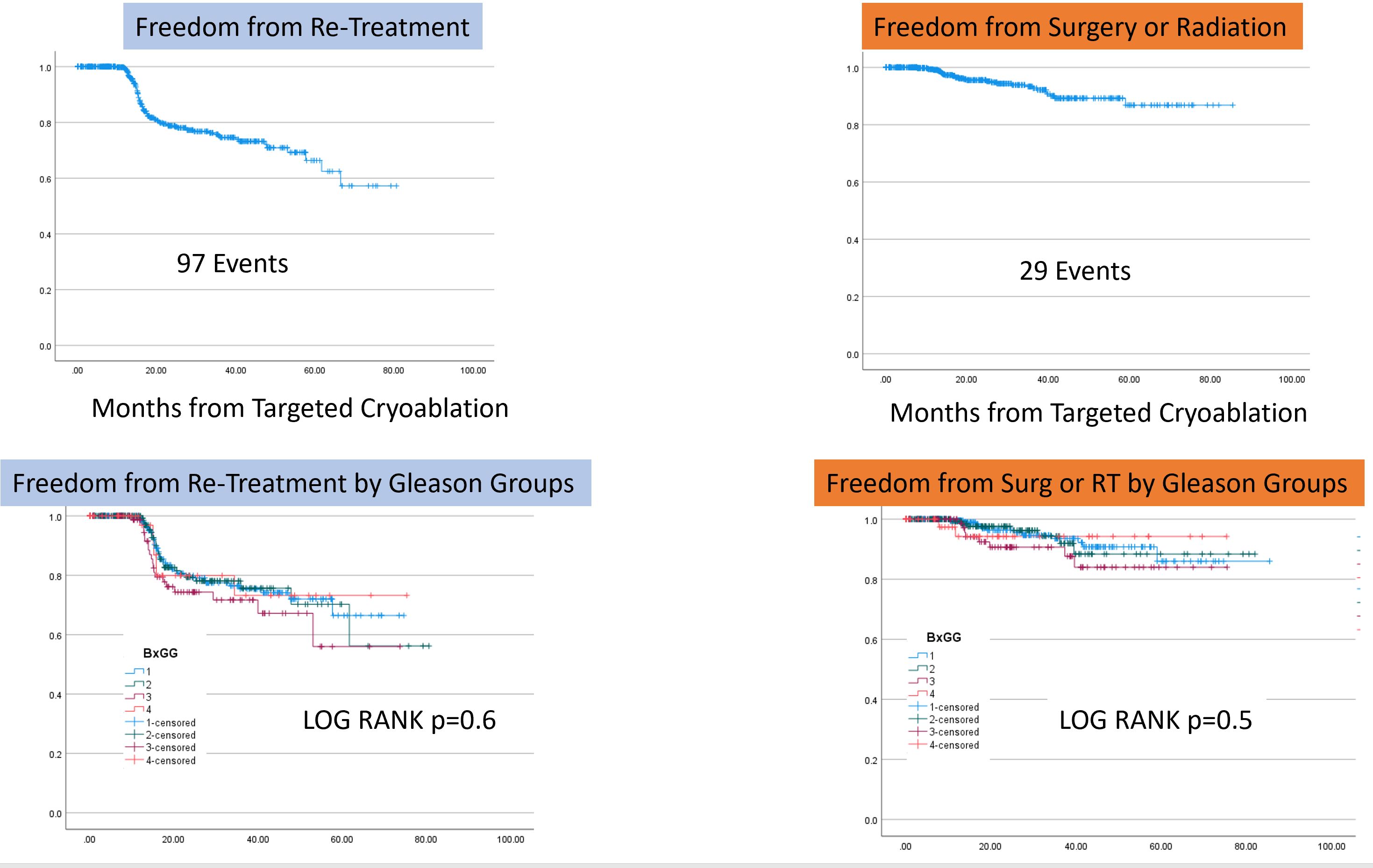Back
Poster, Podium & Video Sessions
Moderated Poster
MP55: Prostate Cancer: Localized: Ablative Therapy
MP55-12: MRI/US fusion guided cryotherapy under local anesthesia: Oncological outcomes
Monday, May 16, 2022
8:45 AM – 10:00 AM
Location: Room 225
Fernando Bianco*, Luna Eusebio, Alberto Lopez, Edward Gheiler, Kaufman Ariel, Miami, FL, Farshad Shafizadeh, New York, NY, Michael Zachareas, Beverly, MA, Gloria Egui-Benatuil, Dailianys Barrios, Miami, FL, Juan Martinez-Salamanca, Madrid, Spain
- FB
Fernando J. Bianco, MD
CEO & Investigator In-Chief
Poster Presenter(s)
Introduction: The American Cancer Society estimates that 248,530 men (1 out of every 8) will be diagnosed with prostate cancer during 2021. MR/US has brought precision a in diagnosis and opportunity to decrease harm associated to whole gland radical interventions. The interest to develop new ablative therapies has risen as a resource to prevent overtreatment. We have developed a transperineal fusion approach that allows for precise diagnosis and treatment in the office setting under local anesthesia. Herein we present our experience with MR/US Fusion Target Cryoablation (TXFCryo)
Methods: NCT02381990 represents a meticulous prospective registry that aims to characterize outcomes after TXFCryo in the office setting. Between 2013 and June 2021, 714 treatment naive patients with prostate cancer underwent targeted TXFCryo across 3 institutions. We examined their oncological outcomes, defined by a positive biopsy, actuarial freedom from re-treatment and freedom from conversion to surgery or radiation. Parametric assessments were evaluated with chi2 tests and actuarial using Kaplan Meier univariate analysis
Results: Of the 714 patients in the series, 581 (81%) were T1c. Their MRI piRADS were 1-2, 3, 4, 5 in 23 (3%), 204 (29%), 236 (34%) and 245 (34%), respectively. Likewise, their Gleason scores were 3+3, 3+4, 4+3 and 8-10 for 324 (45%), 222 (31%), 113 (16%) and 55 (8%), respectively. The median Age, PSA, PSAD, MR Volume was 70.5 yrs , 6.1 ng/dl, 0.13 ng/dl/cc and 46 cc, respectively. Of the 534 with at least a year of follow up, 429 had a 1 year biopsy, if these 133 (31%) were positive, 97 were re-treated and 29 converted to surgery (17) or radiation (12). The figure shows actuarial analysis. 105 had stable non trending PSA responses - with a median decline of 73% and/or a 1 year MRI showing no enhancement. The piRADS of the 1yr post TXFCryo correlated with the likelihood of a positive Biopsy being 6%, 36% and 72% for 1-2, 3, 4-5, respectively, p=0.01
Conclusions: TXFCryo is delivering promising results in the short term. Could serve as an alternative to active surveillance and as a powerful toll to prevent overtreatment of prostate cancer.
Source of Funding: Urological Research Network Foundation

Methods: NCT02381990 represents a meticulous prospective registry that aims to characterize outcomes after TXFCryo in the office setting. Between 2013 and June 2021, 714 treatment naive patients with prostate cancer underwent targeted TXFCryo across 3 institutions. We examined their oncological outcomes, defined by a positive biopsy, actuarial freedom from re-treatment and freedom from conversion to surgery or radiation. Parametric assessments were evaluated with chi2 tests and actuarial using Kaplan Meier univariate analysis
Results: Of the 714 patients in the series, 581 (81%) were T1c. Their MRI piRADS were 1-2, 3, 4, 5 in 23 (3%), 204 (29%), 236 (34%) and 245 (34%), respectively. Likewise, their Gleason scores were 3+3, 3+4, 4+3 and 8-10 for 324 (45%), 222 (31%), 113 (16%) and 55 (8%), respectively. The median Age, PSA, PSAD, MR Volume was 70.5 yrs , 6.1 ng/dl, 0.13 ng/dl/cc and 46 cc, respectively. Of the 534 with at least a year of follow up, 429 had a 1 year biopsy, if these 133 (31%) were positive, 97 were re-treated and 29 converted to surgery (17) or radiation (12). The figure shows actuarial analysis. 105 had stable non trending PSA responses - with a median decline of 73% and/or a 1 year MRI showing no enhancement. The piRADS of the 1yr post TXFCryo correlated with the likelihood of a positive Biopsy being 6%, 36% and 72% for 1-2, 3, 4-5, respectively, p=0.01
Conclusions: TXFCryo is delivering promising results in the short term. Could serve as an alternative to active surveillance and as a powerful toll to prevent overtreatment of prostate cancer.
Source of Funding: Urological Research Network Foundation

.jpg)
.jpg)